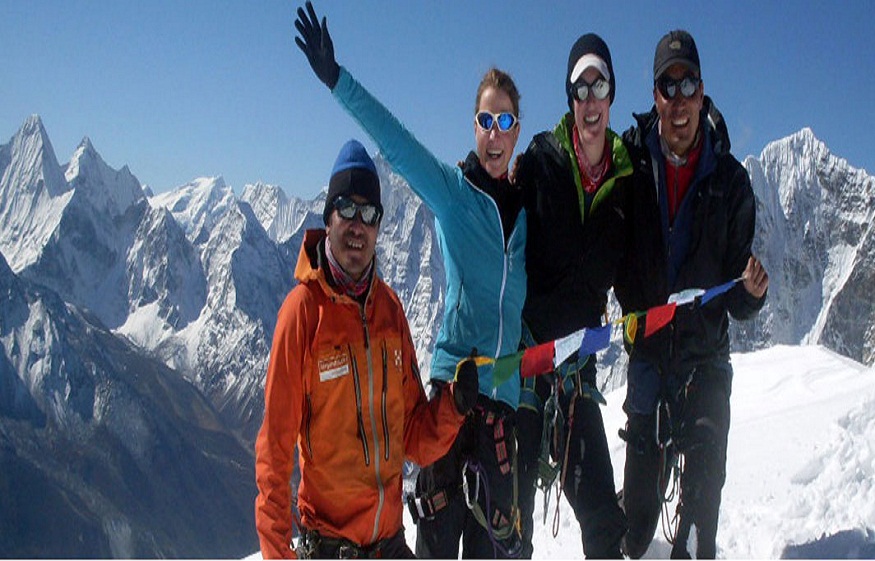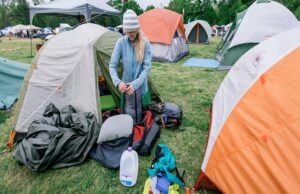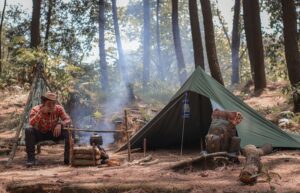Everest Base Camp (EBC) and Island Peak (Imja Tse) are two of the most sought-after trekking and climbing destinations in Nepal. Combining these two makes for an incredible adventure, offering both high-altitude trekking and an entry-level mountaineering experience.
1. Overview of the Journey
- Duration: 18-20 days
- Difficulty: Challenging
- Best Time to Go: March-May & September-November
- Maximum Altitude: Island Peak Summit – 6,189m (20,305ft)
- Permits Required: Sagarmatha National Park Permit, TIMS Card, and Island Peak Climbing Permit
2. Itinerary Breakdown
Phase 1: Trek to Everest Base Camp (EBC)
- Day 1-2: Arrival in Kathmandu & Flight to Lukla (2,860m) → Trek to Phakding (2,610m)
- Day 3-4: Trek to Namche Bazaar (3,440m) & Acclimatization Day
- Day 5-7: Trek to Tengboche (3,867m) → Dingboche (4,410m) → Lobuche (4,910m)
- Day 8-9: Trek to Everest Base Camp (5,364m) & Kala Patthar (5,545m) for sunrise views
- Day 10: Descend to Chhukung (4,730m), the base for Island Peak
Phase 2: Island Peak Summit
- Day 11: Acclimatization & Ice Climbing Training
- Day 13: Summit Day! Early morning climb to the top (6,189m) → Return to Chhukung
- Day 14-16: Trek back to Namche and Lukla
- Day 17-18: Fly to Kathmandu & Departure
3. Challenges & Preparation
- Altitude Sickness: Proper acclimatization and hydration are key
- Technical Climbing: Basic use of crampons, ropes, and ice axes is required
- Physical Fitness: Good endurance and stamina are needed for long trekking & summit day
4. Why Do This Trek?
✅ Experience Everest Base Camp & witness Mt. Everest up close
✅ Climb a 6,000m+ peak with relatively moderate difficulty
✅ Stunning views of Lhotse, Nuptse, Makalu & Ama Dablam
✅ A mix of trekking & mountaineering – ideal for adventure seekers
Lobuche peak climbing (6,119m) is one of Nepal’s most famous trekking peaks, standing near Everest Base Camp (EBC). It has two main summits:
- Lobuche East (6,119m) – A trekking peak, open for climbing.
- Lobuche West (6,145m) – A more technical climb, requiring an expedition permit.
Most climbers go for Lobuche East, as it is a challenging yet achievable peak for trekkers looking to take their adventure to the next level.
Permits & Costs
✅ Permits Required:
- Lobuche Peak Climbing Permit (Issued by NMA)
- Sagarmatha National Park Entry Permit
- Khumbu Pasang Lhamu Rural Municipality Permit
Estimated Cost: $2,500 – $5,500 (depends on the company & group size).
Essential Gear ️
✔️ Climbing Gear: Crampons, ice axe, harness, ropes, helmet.
✔️ Clothing: Layered system (base layer, mid-layer, down jacket, shell).
✔️ Footwear: Insulated climbing boots.
✔️ Accessories: Gloves, sunglasses, headlamp, gaiters.
✔️ Other: Sleeping bag (-20°C), trekking poles, first aid kit.
Island Peak Climbing: Join from Base Camp
Standing at 6,189 meters (20,305 feet), it offers an exhilarating climb for adventure enthusiasts seeking to experience high-altitude mountaineering. The climb is challenging yet achievable,
Island Peak Climbing: Join from Base Camp
Island peak climbing join from base camp also known as Imja Tse, is one of the most popular trekking peaks in Nepal. Standing at 6,189 meters (20,305 feet), it offers an exhilarating climb for adventure enthusiasts seeking to experience high-altitude mountaineering. The climb is challenging yet achievable, making it an excellent choice for both novice and experienced climbers. One of the best ways to embark on this adventure is by joining from the Island Peak Base Camp.
Why Start from Base Camp?
Starting from the Island Peak Base Camp allows climbers to acclimatize properly and get a direct approach to the summit. This option is particularly beneficial for those who have already completed the Everest Base Camp trek or have trekked to Chhukung. It helps climbers avoid the long trekking days and instead focus on the technical climb itself.
Required Skills and Preparation
Although Island Peak is considered a trekking peak, it does require basic mountaineering skills, including the use of crampons, ropes, and ice axes. Proper physical conditioning, strength training, and endurance exercises are crucial for a successful ascent.
Best Time to Climb
The ideal seasons for climbing Island Peak are spring (March to May) and autumn (September to November). During these periods, the weather is relatively stable, offering clear skies and favorable conditions for climbing



